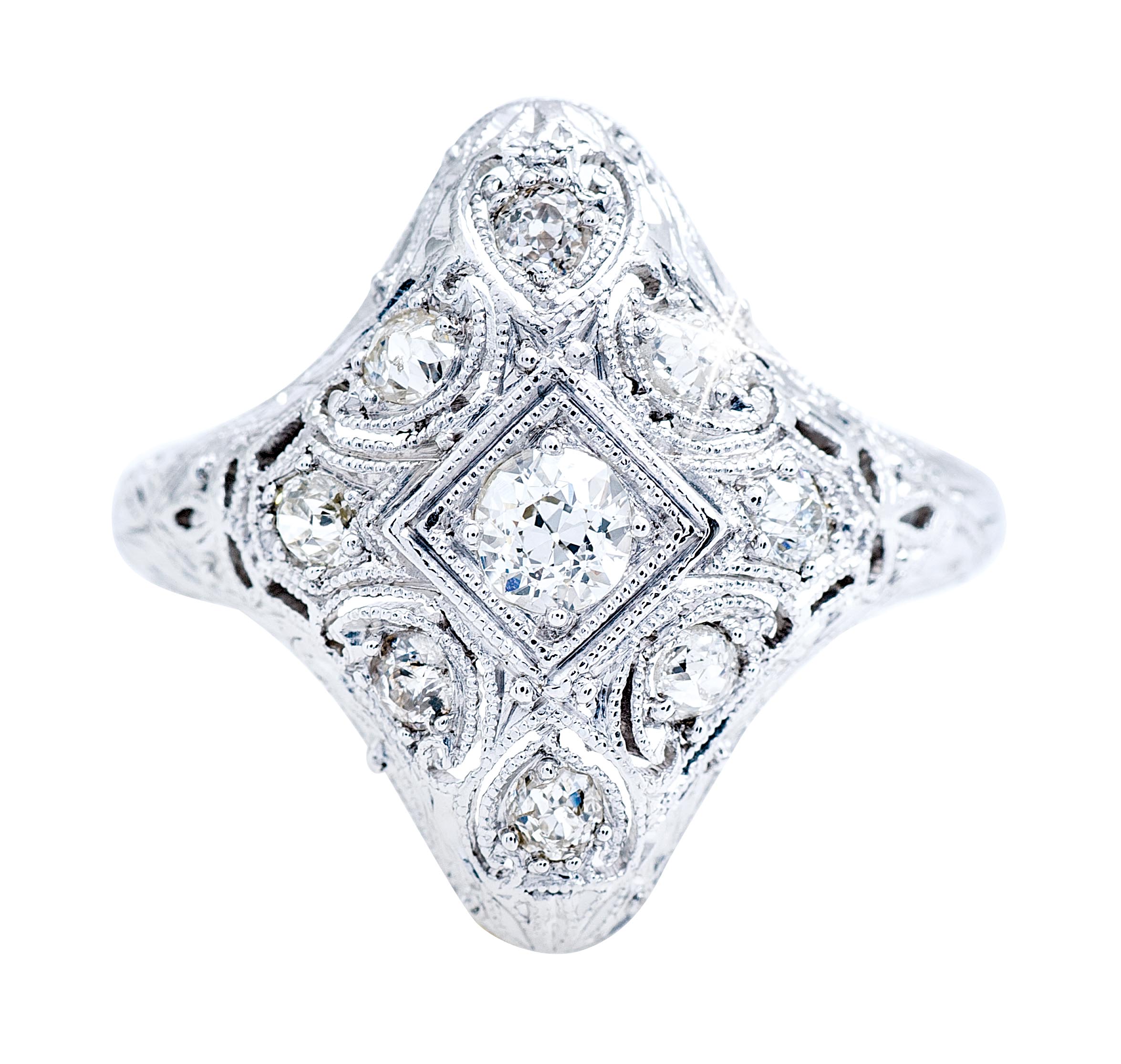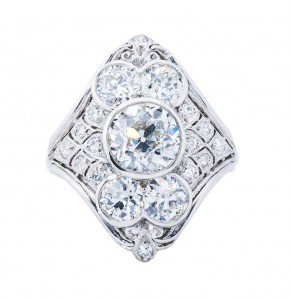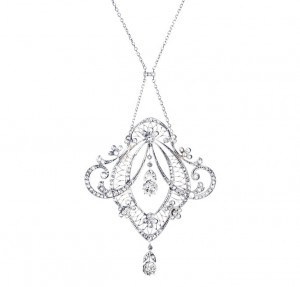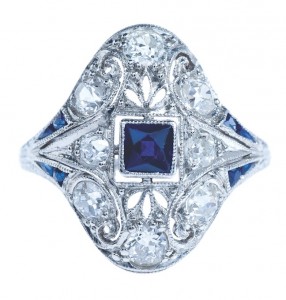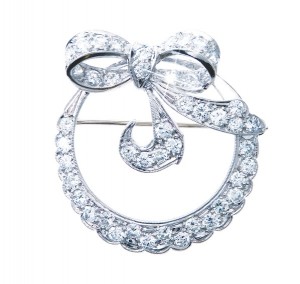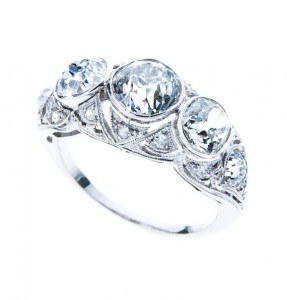The Edwardian period began at the start of the reign of King Edward VII in 1901, and lasted until about 1915. His court put a strong emphasis on fine, feminine jewels, to be worn under the shine of electric lights for the first time in history. This period is often called “La Belle Époque” meaning “The Beautiful Era.”
Edwardian jewelry places a strong emphasis on delicate, lacelike platinum tracery. The fashion of the day featured light pastels, and pure white, and so platinum became the precious metal of choice. Many new techniques were developed to take advantage of the strength of this precious metal, as it was relatively unknown previously. Milgraining was especially popular; an engraving technique that adds minute texture to soften the lines of a design. In the very early stages of the period, platinum was still backed with gold, as had been the silver and gold designs of the past. A breakthrough in 1903 gave rise to a new type of jeweler’s torch that allowed jewelers to use the much higher levels of heat necessary to work platinum all on its own. It was then that the white metal really came into its own.
Diamonds, particularly those of fine color and clarity, were the most featured gem in Edwardian designs. Because of this emphasis, new techniques in diamond cutting allowed for new shapes to emerge, such as the marquise, emerald cut, and briolette. Jewelers set the diamonds to be light and ethereal, in contrast to the heavier styles of the Victorian and Art Deco eras.
Colored gems such as sapphire, aquamarine, pearl, amethyst, and demantoid garnet were also popular in jewelry. Typically the piece would predominately feature diamonds with just a touch of color. For example, fashion favored the sky blue of Montana sapphires over the richer, deeper blues from other locales.
Popular motifs in Edwardian jewelry include bows, garlands, lace, and drapery. Necklaces such as sautoirs, a long rope with tassels, became popular. Other styles include the asymmetrical double pendant negligee and the simpler pendant lavalier. Chandelier earrings swiftly overtook simple studs with their gossamer openwork. The finest of the gentry wore incredible tiaras festooned with diamonds. Rings remained popular, often stacked with several to a finger, and elongated designs featuring a center gem with intricate filigree and multiple side stones were very common.
The Edwardian era came to an end with the beginning of World War I, when suddenly precious metals became scarce and times grew tough.
Share
Leo Hamel

